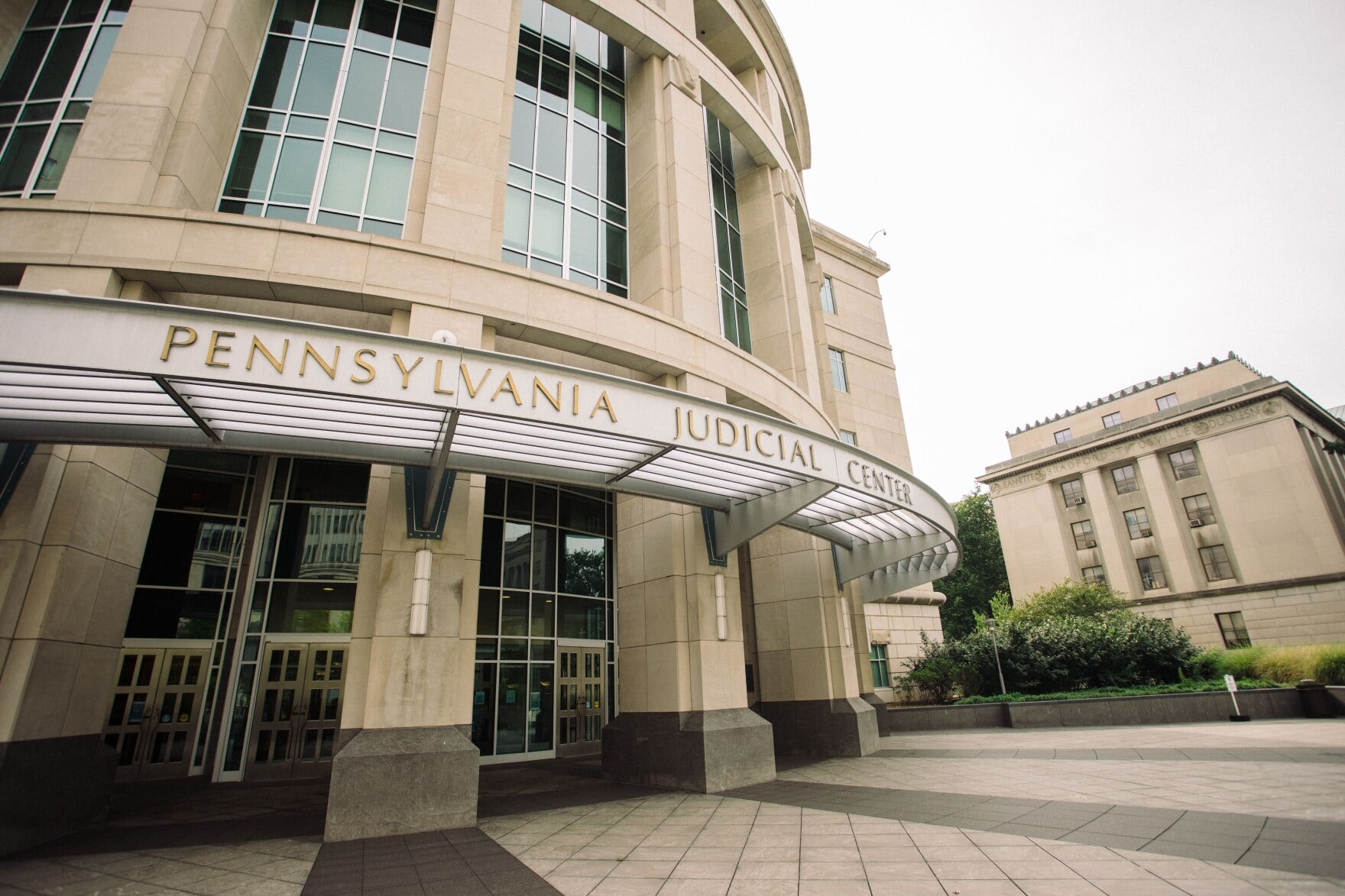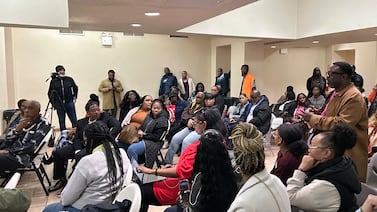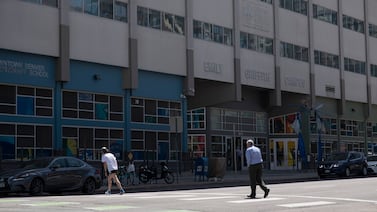This story has been updated.
A Commonwealth Court judge has declared Pennsylvania’s school funding system unconstitutional and ordered the General Assembly to overhaul it.
Judge Renée Cohn Jubelirer’s ruling, which the court issued Tuesday, could have a profound long-term impact on the state’s approach to education spending, although an appeal of her ruling is likely and the case could end up before the Pennsylvania Supreme Court.
Pennsylvania’s system, which relies heavily on property taxes with a relatively low state contribution, has some of the widest disparities in spending between wealthy and low-income districts in the nation. Jubelirer highlighted such disparities in her ruling.
“Students who reside in school districts with low property values and incomes are deprived of the same opportunities and resources as students who reside in school districts with high property values and incomes,” Jubelirer wrote in a 786-page opinion. “The disparity among school districts with high property values and incomes and school districts with low property values and incomes is not justified by any compelling government interest nor is it rationally related to any legitimate government objective.”
As a result of these disparities, she said, “Petitioners and students attending low-wealth districts are being deprived of equal protection of law.”
Jubelirer ordered the General Assembly to begin work immediately on a remedy to bring the state’s funding system into constitutional compliance.
The ruling marks a victory for school districts and advocacy groups that have worked for decades to achieve adequacy and equity in Pennsylvania’s school funding system.
The lawsuit, brought by six school districts, two civil rights groups, and several parents, was filed in 2014 and was the latest in a series of such cases. State courts had dismissed all the previous ones, saying that such disputes were ultimately a matter for the legislature and the executive branch, not the courts.
Jubelirer heard four months of testimony from teachers, students, and school officials from a variety of school districts. They described conditions in which children are forced to learn in closets and hallways and 75 small children are forced to share one bathroom.
Philadelphia is not a plaintiff in the case, but former Superintendent Wiliam Hite and the district’s then-budget director, Uri Monson, testified for the plaintiffs. Monson is now the budget secretary for Gov. Josh Shapiro, who during last year’s gubernatorial campaign spoke out in favor of fair and equitable school funding.
While the governor and the Pennsylvania Department of Education were defendants in the case, only the Republican-led legislature defended the current system before Jubelirer. By contrast, Shapiro wrote a brief in support of the plaintiffs while he was serving as attorney general.
Shapiro, a Democrat who took office last month, will make his budget address on March 7.

“The Education Clause, article III, section 14 of the Pennsylvania Constitution, requires that every student receive a meaningful opportunity to succeed academically, socially, and civically, which requires that all students have access to a comprehensive, effective, and contemporary system of public education,” Jubelirer wrote. “Respondents have not fulfilled their obligations to all children under the Education Clause in violation of the rights of Petitioners.”
She also said that the current system violated the U.S. Constitution’s equal protection clause.
The case is William Penn School District et al. v. Pennsylvania Department of Education et al.
Philadelphia school leaders hail funding ruling
Jubilant attorneys who represented the plaintiffs called the ruling “an earthquake” that will impact all schools in Pennsylvania for years to come.
“This is an extraordinary day for the Commonwealth,” said Dan Urevick-Ackelsberg of the Public Interest Law Center at a Tuesday press conference. And Maura McInerney of the Education Law Center called it a “decisive, clear and unequivocal victory for public school children in Pennsylvania.”
If the Republican legislative leadership appeals Jubelirer’s ruling, Urevick-Ackelsberg said, the plaintiffs will try to prevent a stay of the ruling pending a final resolution. While Republicans still control the Pennsylvania Senate, control of the Pennsylvania House hinges on special elections also taking place Tuesday.
In the meantime, he said, the attorneys will work with the governor and legislature to bring the state into constitutional compliance. And he said he expects Shapiro’s first budget after the ruling to be “a significant down payment” toward that effort.
One of the things Jubelirer emphasized “is that every witness in this trial agreed that every child can learn, and that looking at the evidence presented she found that what was required under the constitution had not been provided in a way that makes that possible,” said Katrina Robson of the law firm O’Melveny & Myers, which worked on the case pro bono, providing research and other resources. Robson made the opening and closing arguments in the case and questioned many of the witnesses.
The state now has a budget surplus, which could make it easier for Shapiro to propose a big hike in state education aid. He could also propose to distribute all the state’s education aid money through a “fair funding formula” weighted for student needs that was adopted (but not fully utilized) around the time plaintiffs filed the lawsuit. Such a shift could mean nearly a billion dollars more in state aid for Philadelphia next year.
Studies presented to Jubelirer by plaintiffs during the trial estimated that the state would need an additional investment of $4.6 billion annually to provide all students with a “comprehensive, effective and contemporary education.”
Meanwhile, Reginald Streater, president of the Philadelphia Board of Education, issued a statement Tuesday that the board is “ecstatic” about the outcome, and that “for too long, students in Philadelphia have been shortchanged by a funding system that ignored their needs.”
Philadelphia was not a plaintiff in the case because at the time it was filed in 2014, the district was under state control through the School Reform Commission. But several of the individual parent plaintiffs are from the city.
“We look forward to Governor Shapiro and the General Assembly acting so that students here in Philadelphia and across the Commonwealth have access to an education that prepares them for success,” Streater said.
Jerry Jordan, president of the Philadelphia Federation of Teachers, said he was “beyond elated” by the ruling.
“Today’s victory is years in the making, and in many ways a culmination of our fight for equitably funded public education – and in many ways just a beginning,” he said in a statement.
Pennsylvania, like several other states, has a clause in its constitution saying that the state must maintain a “thorough and efficient system of public education.” Courts in other states, including New Jersey, have interpreted this to mean that the funding system must direct more money to districts with students who have more needs.
In Abbott v. Burke, for example, the New Jersey Supreme Court in 1990 ruled that the legislature must guarantee that 31 of the state’s poorest districts, including Newark and Camden, had as much money to spend per student as surrounding suburbs and adequate funds “necessary to address the needs of urban schoolchildren.” Subsequent legal battles over that prominent ruling went on for more than two decades.
While there had been previous lawsuits in Pennsylvania on this issue, none came to trial before this one. During months of testimony, Republican legislative leaders argued that there is a weak correlation between money spent on schools and student achievement. They also said education could be improved in the state by expanding school choice in various ways.
Additionally, they said ordering more state spending on education would erode local control, a key value of education in the state, lawmakers said.
“This Court should not enter into the political fray by choosing one set of policy viewpoints over another,” then-Senate Majority Leader Jake Corman wrote in a brief.
But Jubelier firmly rejected that premise, writing that “students in low-wealth districts do not have access to the educational resources needed to prepare them to succeed academically, socially, or civically.”
She cited graduation rate differences, college graduation rates, overall postsecondary attainment, and other outcomes as evidence of this.
Correction, Feb. 8, 2023: This story has been corrected to accurately reflect comments made by Katrina Robson. This story has also been updated to reflect the role of Robson and the O’Melveny & Myers law firm in the case.
Dale Mezzacappa is a senior writer for Chalkbeat Philadelphia, where she covers K-12 schools and early childhood education in Philadelphia. Contact Dale at dmezzacappa@chalkbeat.org.






